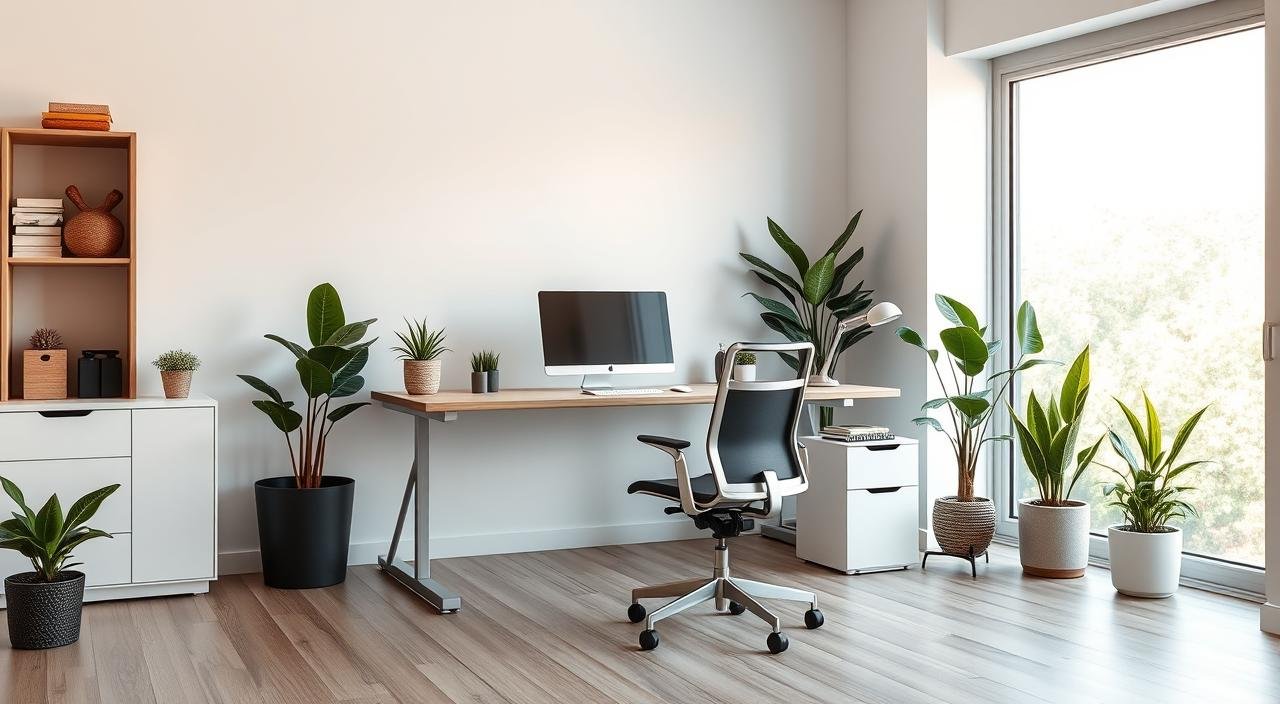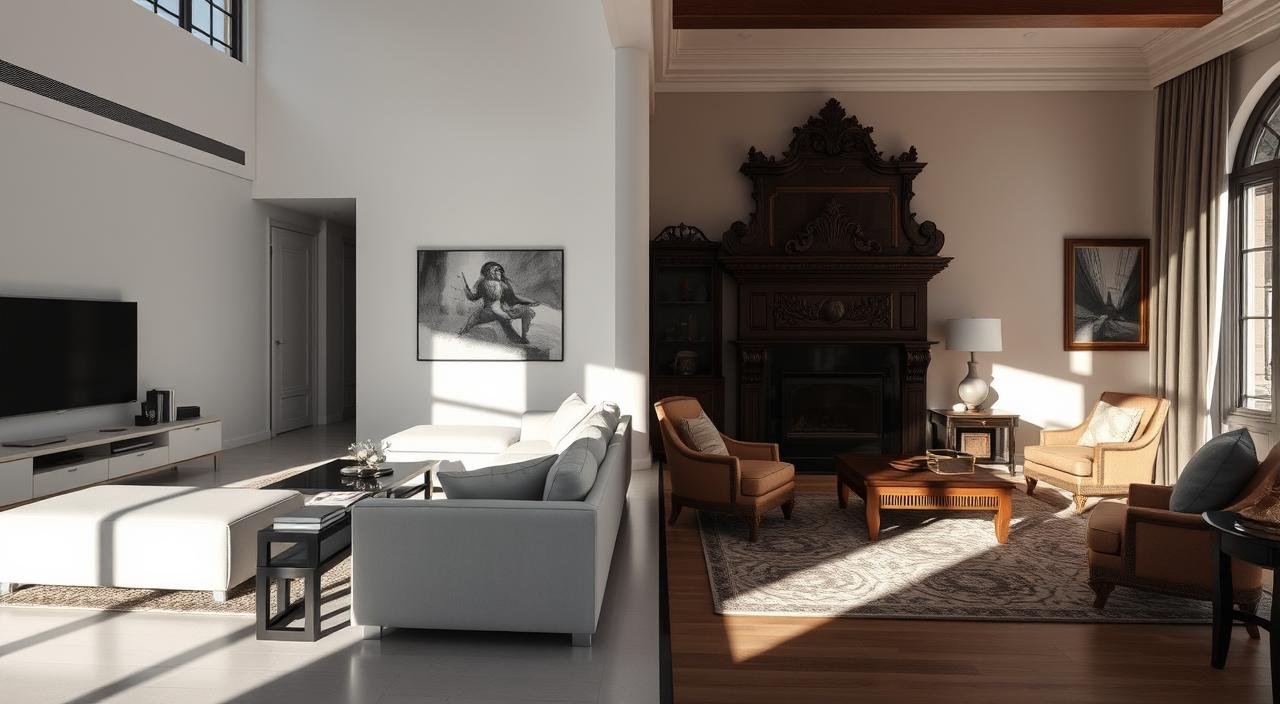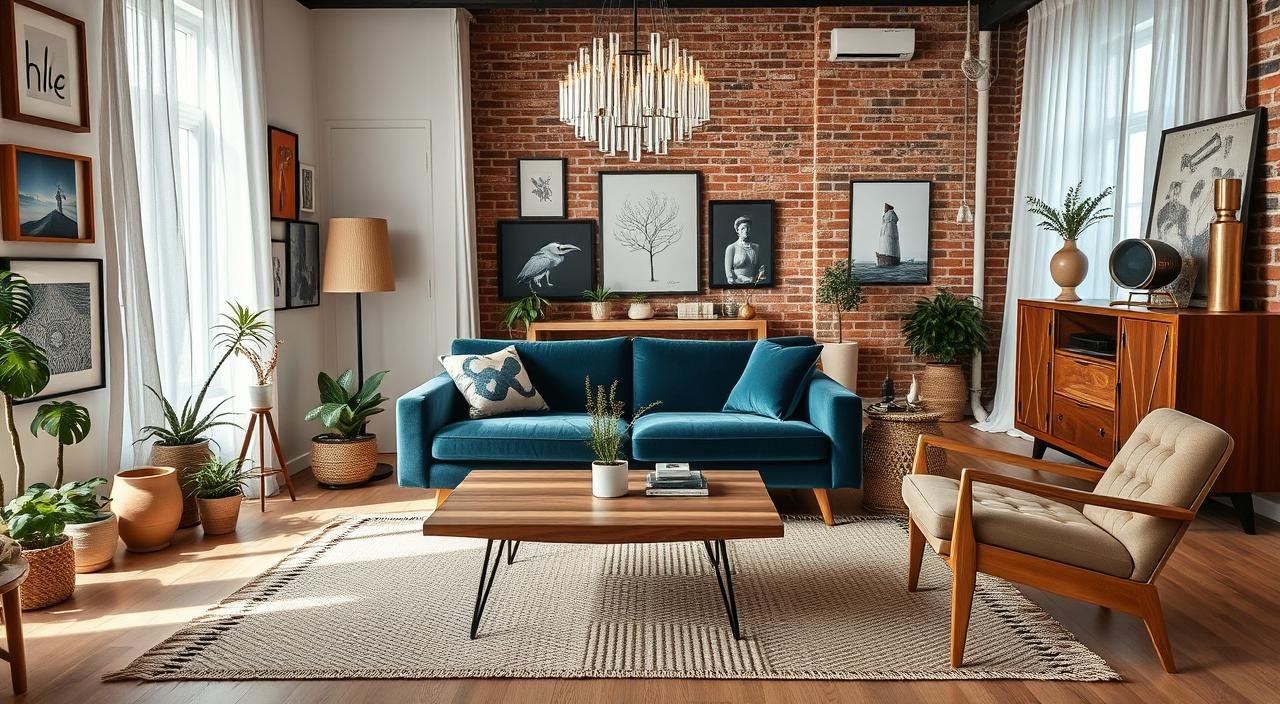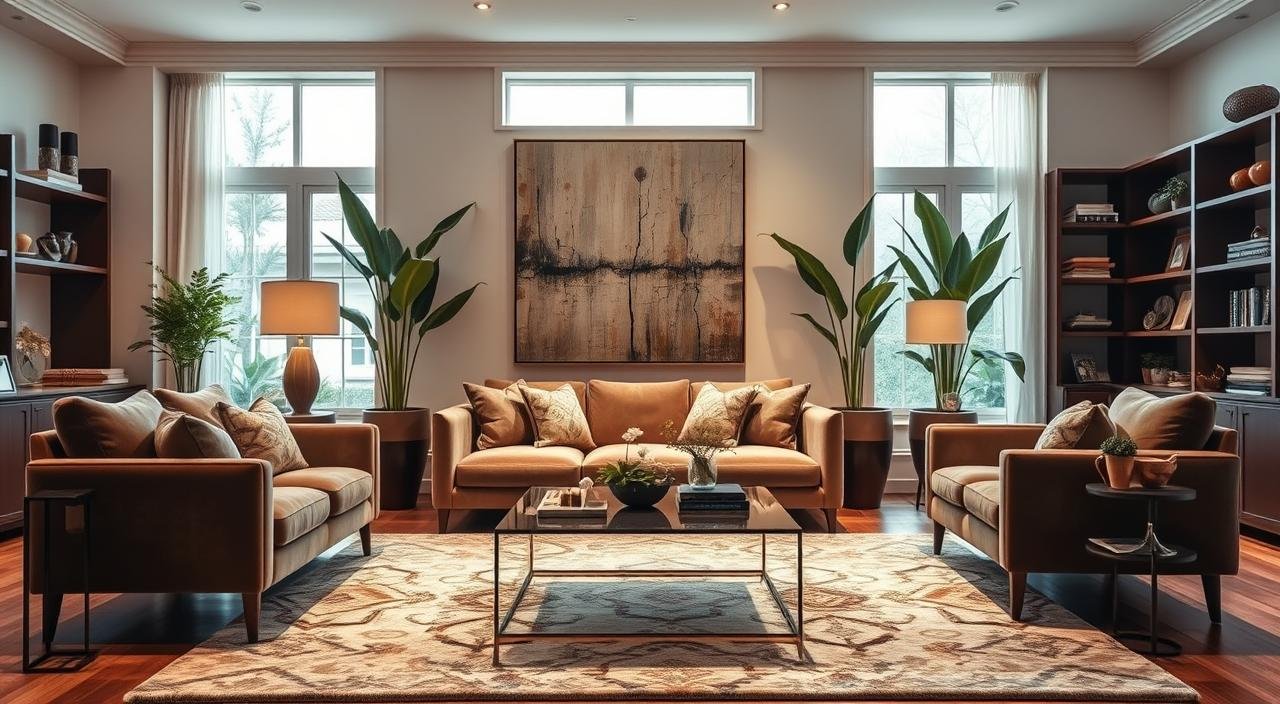Optimize Your Space: Home Office Setup Ideas
Ever thought about how your home office setup might impact your productivity? With remote work on the rise, optimizing your workspace is more than just comfort. It’s essential for boosting work efficiency, creativity, and overall well-being.
This article explores vital home office setup ideas. These will help you craft an efficient workspace that meets your specific needs. Learn practical strategies and tips to turn your space into a productivity hub.
Key Takeaways
- A well-organized home office can significantly improve productivity.
- Efficient workspace organization helps create a comfortable and motivating environment.
- Practical strategies can transform your home office into a productivity powerhouse.
- Your workspace should reflect your unique needs and preferences.
- Maximizing available space is key to an effective home office setup.
Understanding the Importance of a Home Office
Creating a dedicated home office greatly impacts your business productivity. A well-organized workspace helps you focus better, reducing distractions from home. It’s not just about looks; it’s about creating a space that supports your work, keeping you focused and organized all day.
It’s vital to separate work from personal life for a healthy balance. Without a dedicated area, it’s hard to disconnect from work, leading to burnout. A home office helps set boundaries, improving your overall well-being.
- A dedicated workspace boosts motivation and efficiency.
- Separating work and home life fosters mental clarity.
- A home office can be tailored to personal comfort and style.
Having a designated work area reinforces productive habits, making your workday smoother. By valuing a home office, you enhance focus and productivity, setting the stage for professional success.
Key Components of an Efficient Home Office
Setting up an efficient home office requires attention to several key areas. These include furniture, technology, storage, and lighting. Each plays a vital role in boosting productivity and comfort. The right choices in these areas can greatly enhance your workspace’s efficiency.
Essential Furniture: The right furniture is fundamental. A comfortable chair and a spacious desk are must-haves. An ergonomic chair supports good posture, while a large desk helps keep your tools organized.
Technology: Modern technology is essential. High-speed internet, a reliable computer, and necessary peripherals like printers and speakers are key. They streamline your work and reduce frustration during important tasks.
Storage Solutions: Keeping your space organized is critical. Use vertical shelving and filing cabinets to store papers and equipment. This makes your essential items easily accessible.
Lighting: Good lighting is vital for focus and productivity. Natural light is ideal, but task lighting and adjustable fixtures are also necessary. They ensure proper illumination, even during late-night work.
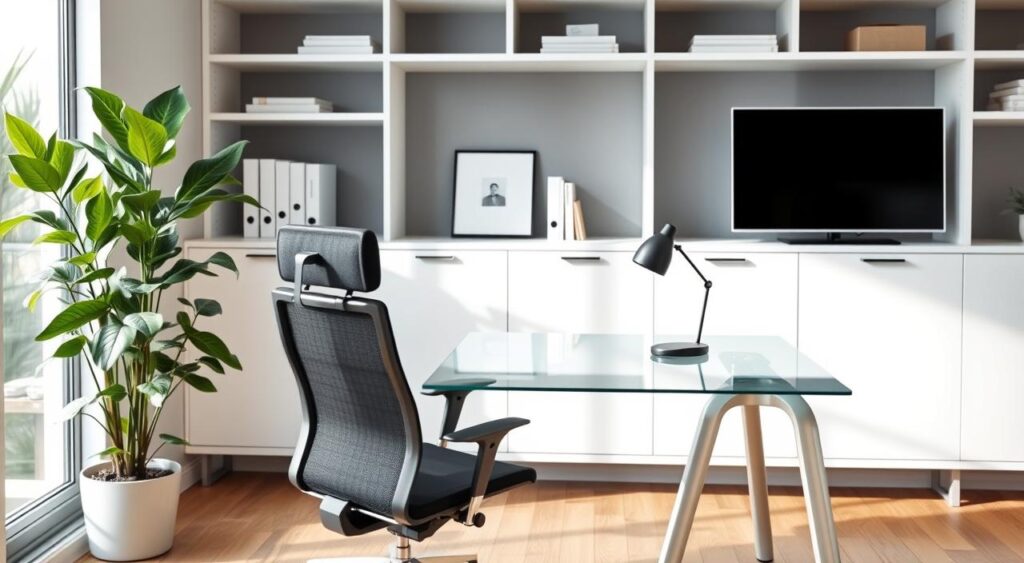
Integrating these components creates a functional space that supports your work and creativity. Choose quality office essentials that promote a balanced work-life environment. This makes your home office a place where you can thrive.
Home Office Setup Ideas: Maximizing Your Space
Turning your home office into a space that’s both functional and visually appealing requires careful planning, more so when space is limited. By adopting innovative small office layouts, you can make the most of every inch. This approach ensures your workspace is both productive and comfortable.
Creative Layouts for Small Spaces
In the realm of small office layouts, creativity is essential. Here are some strategies that can make a big difference:
- Corner Desks: Place desks in corners to save wall space for storage.
- Multi-Functional Furniture: Opt for desks that serve as filing cabinets, reducing the need for multiple pieces.
- Set Up Zones: Designate areas for different tasks, like a meeting spot separate from your desk.
Using Vertical Space for Storage
Integrating vertical storage ideas can greatly improve the functionality of smaller offices. Here are some tips to consider:
- Wall Shelves: Install floating shelves above desks or workspaces for books, supplies, or decor.
- Hanging Organizers: Pegboards or fabric wall organizers keep items visible without cluttering your desk.
- Over-the-Door Racks: Hang storage solutions on doors for quick access to supplies.
By utilizing vertical space and designing small office layouts creatively, you can achieve maximum space utilization. These strategies turn a cramped area into a highly efficient workspace, boosting productivity. Even small adjustments can significantly impact your work environment.
Workspace Organization Tips to Enhance Productivity
Setting up an efficient home office starts with effective workspace organization tips to boost productivity. A well-organized space minimizes distractions and aids in focusing on tasks. It’s vital to incorporate decluttering techniques and effective storage solutions.
Decluttering Your Workspace
Decluttering your workspace not only makes the environment visually pleasing but also boosts productivity. Here are some actionable steps to consider:
- Assess and eliminate items that are no longer necessary. Begin with papers, old supplies, and equipment unused for months.
- Implement the ‘one in, one out’ rule: for every new item, remove an existing one.
- Sort items into categories like ‘to keep’, ‘to donate’, and ‘to recycle’. This method streamlines decision-making.
- Adopt a digital-first attitude: transfer physical documents to digital formats to reduce clutter.
Effective Storage Solutions
Effective storage solutions are key to maintaining an organized workspace, ensuring everything has a designated place. Here are some strategies to implement:
- Use vertical space by installing shelves and wall organizers to free up desk space.
- Incorporate functional furniture with built-in storage, such as desks with drawers or ottomans that serve double duty.
- Label everything to simplify finding items when needed, boosting overall efficiency.
- For digital organization, implement a clear file naming system and consider cloud storage options to keep documents accessible but clutter-free.
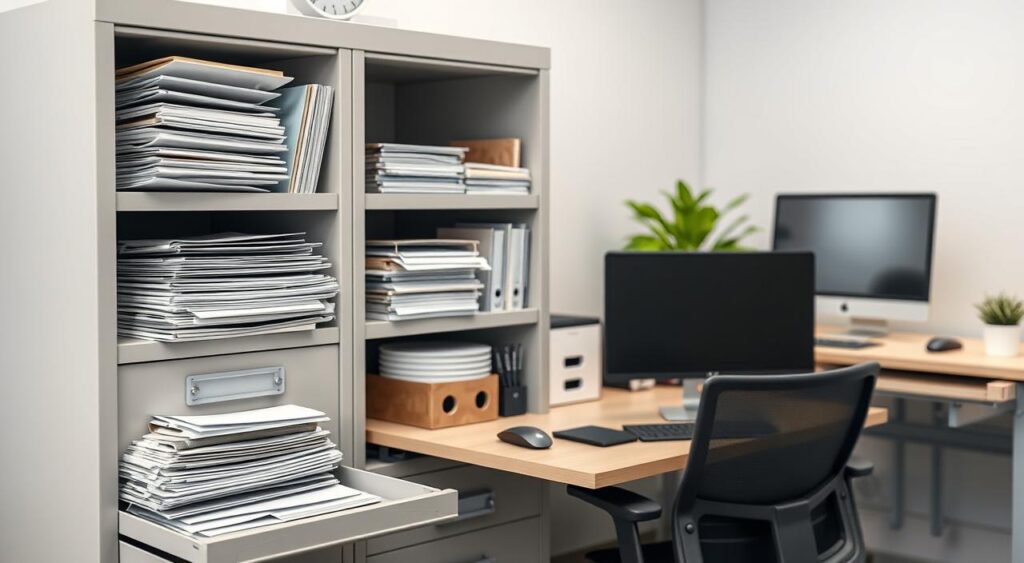
Choosing Ergonomic Office Furniture for Comfort
Creating a comfortable and productive home office requires the right ergonomic furniture. Quality pieces can greatly improve your workspace experience. Understanding the benefits of ergonomic design is key to staying focused and productive.
Benefits of Ergonomic Chairs and Desks
Ergonomic furniture offers many benefits for your work performance. One major advantage is better posture. A well-designed chair supports your back, promoting a healthier sitting position. This reduces muscle and joint strain, leading to less discomfort during long hours.
Embracing ergonomic design also boosts productivity. When you’re comfortable, you can concentrate more on your work. Investing in ergonomic chairs and desks tailored to your needs creates a more enjoyable and productive space.
Adjustable Furniture Options
Adjustable desks are popular for their ability to adapt to individual preferences. They allow you to switch between sitting and standing, promoting healthier movement. This flexibility helps prevent the negative effects of prolonged sitting, making adjustable desks essential for any ergonomic workspace.
Choosing adjustable office furniture offers a personalized approach to work. Everyone has different comfort levels. Being able to modify your desk height or chair position leads to a more efficient work routine that meets your needs.
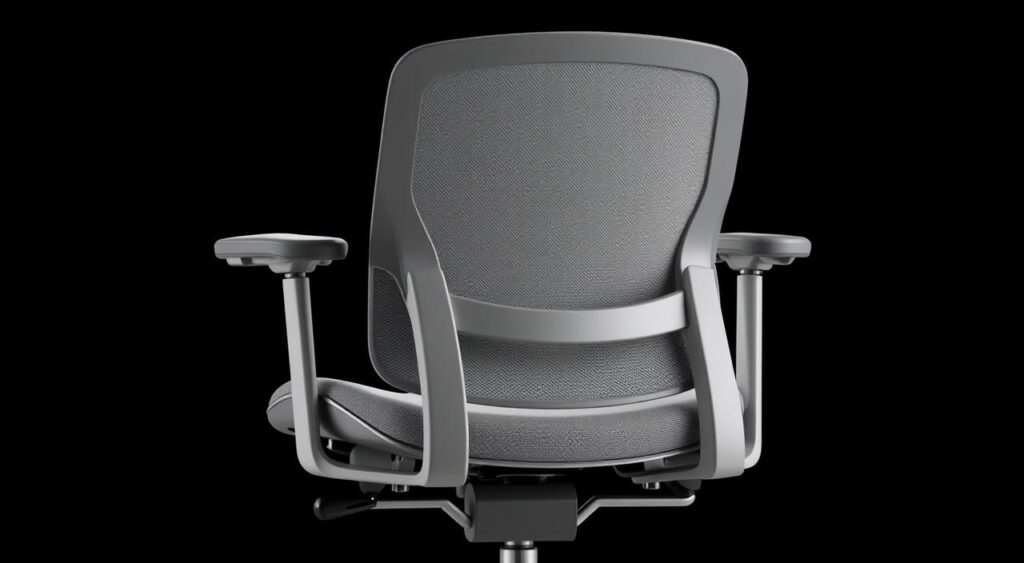
Incorporating Technology in Your Home Office
In today’s digital age, integrating technology into your home office is essential for maximizing productivity and comfort. Selecting the right tools enhances your workflow and supports a sustainable working environment. This section will provide insights on essential tech gadgets that can boost your efficiency and the importance of establishing a reliable network setup for seamless connectivity.
Essential Tech Gadgets for Efficiency
Utilizing essential tech gadgets may significantly increase your productivity. Consider the following items:
- High-Quality Monitors: A dual-monitor setup can streamline tasks, allowing you to multitask more effectively.
- Noise-Canceling Headphones: Focus is key, and noise-canceling headphones help eliminate distractions.
- Ergonomic Keyboards and Mice: These gadgets reduce strain on your hands and wrists during long work hours.
- Smartphone Stands: Keeping your phone within reach and at eye level enables quick access to notifications and apps.
- Productivity Software: Applications that organize tasks and manage time can drastically improve your output.
Setting Up a Reliable Network Connection
A reliable network setup is vital for uninterrupted workflow, which is critical for remote work. Follow these tips to enhance your network performance:
- Opt for a Wired Connection: Use Ethernet cables for a stable and fast internet connection, minimizing latency issues.
- Invest in Quality Routers: A dual-band or tri-band router can manage multiple devices and offer wider coverage.
- Regularly Update Router Firmware: Keeping your router up to date ensures optimal performance and security.
- Analyze Network Coverage: Employing Wi-Fi extenders or mesh systems can eliminate dead zones, promoting seamless connectivity.
- Consider Bandwidth Needs: Assess the number of devices and tasks simultaneously running to choose an appropriate internet speed.
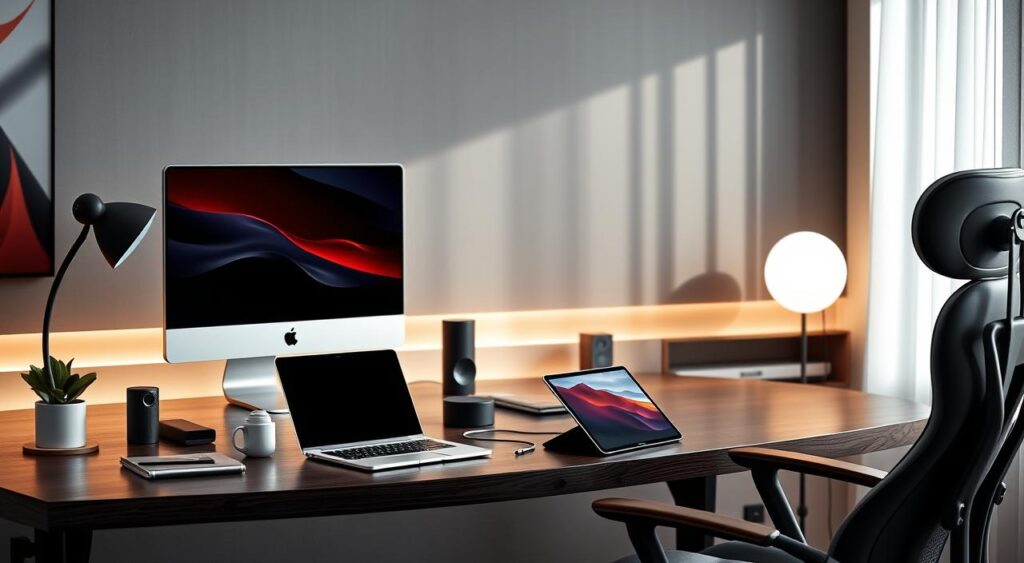
DIY Workspace Solutions for Personal Touches
Personalizing your home office can significantly influence your productivity and mood. Engaging in DIY workspace solutions empowers you to create an environment tailored to your unique style and needs. Making custom desk organizers helps declutter your tabletop, while fun decor projects infuse creativity into the workspace, reflecting your personality.
Creating Custom Desk Organizers
Custom desk organizers not only enhance the aesthetic of your home office but also improve functionality. You can easily design organizers that cater to your specific requirements, keeping essential items within reach. Consider using materials like wood, cardboard, or recycled containers to craft organizers that suit your taste.
- Wooden Trays: Build a simple wooden tray to hold stationery or gadgets.
- Fabric Organizers: Use colorful fabric to create pockets for business cards and notes.
- Repurposed Containers: Transform glass jars into chic holders for pens and pencils.
Fun and Functional Decor Projects
Integrating functional decor projects into your home office design can make the space both enjoyable and practical. Choose projects that align with your work style and personal tastes. This not only boosts your creativity but also enhances your workspace’s efficacy.
- Photo Wall: Create a collage of inspiring images or quotes.
- Task Lighting: Craft personalized lampshades to brighten your desk area.
- Bulletin Board: Assemble a colorful corkboard for displaying important notes and reminders.
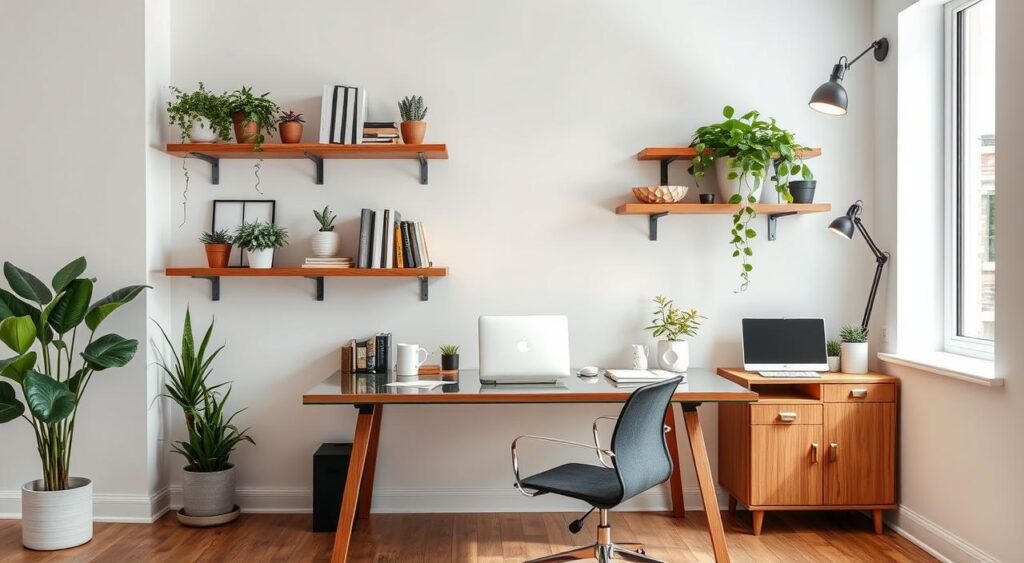
| Project Type | Materials Needed | Estimated Time |
|---|---|---|
| Wooden Tray Organizer | Wood, screws, sandpaper | 2 hours |
| Fabric Pockets | Fabric, thread, sewing machine | 1 hour |
| Repurposed Jars | Glass jars, paint, stickers | 30 minutes |
| Photo Wall | Frames, adhesive, photos | 1 hour |
| Task Lighting | Lamp kit, fabric, glue | 2 hours |
| Bulletin Board | Corkboard, frame, pins | 1.5 hours |
Home Office Decor Inspiration to Boost Creativity
Creating an inspiring home office environment can significantly impact your creativity and productivity. Consider how color psychology plays a critical role in your workspace. The right color palette not only enhances aesthetics but also influences your mood and energy levels. Recently, Farrow & Ball introduced a new palette with nine fresh colors reflecting everyday life. This diverse selection showcases the importance of drawing inspiration from common objects, making your space feel more personal and inviting.
Choosing the Right Color Palette
When designing your home office, think about hues that will elevate your spirit and stimulate your mind. Shades like soft greens and warm browns can create a calming atmosphere. Vibrant colors may ignite your creativity. Drawing from recent trends, incorporating colors such as Sap Green and Broccoli Brown can instill a sense of nature, which enhances focus and clarity.
Incorporating Plants for a Fresh Atmosphere
Integrating plants in office spaces contributes to improved air quality and adds vibrancy to your decor. Consider low-maintenance plants like succulents, snake plants, or pothos. These not only purify the air but also resonate with the ongoing trend of including natural elements in home decor. By introducing greenery, you foster a refreshing ambiance while promoting a healthier workspace.
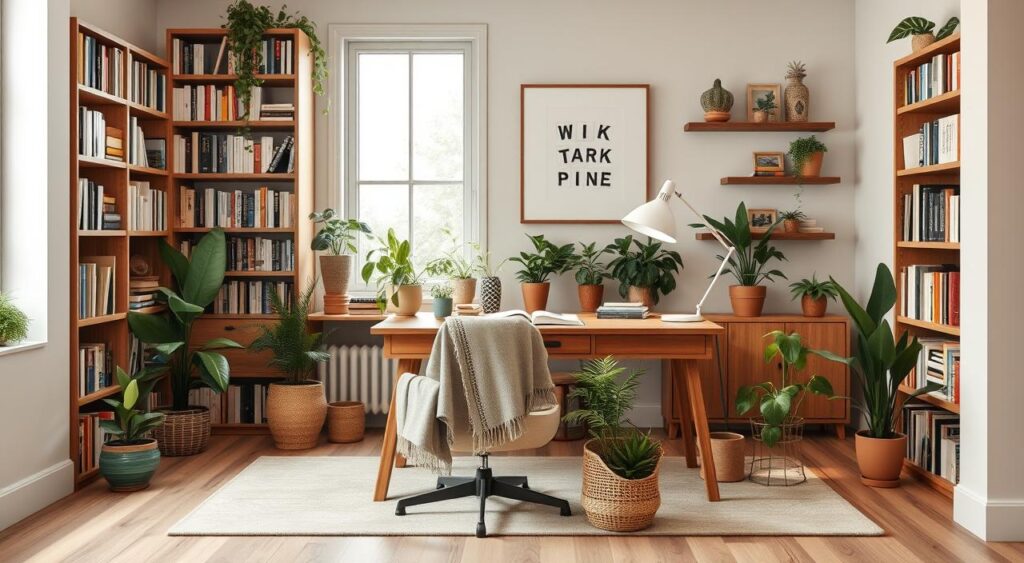
Minimalist Office Setup: Less is More
A minimalist office setup emphasizes simplicity and functionality, aiming to create a clutter-free environment that boosts productivity. By adopting clean aesthetic tips, you can transform your workspace into a serene retreat that fosters creativity and concentration. This approach allows for efficient use of space, enabling the selection of decor items that contribute practically without overwhelming your environment.
Top Tips for a Clean Aesthetic
Creating a harmonious workspace relies on strategic choices that promote a clean aesthetic. Consider the following tips:
- Choose a neutral color palette such as whites or grays to maintain a sense of calm.
- Utilize vertical shelving for storage, which can free up valuable floor space.
- Incorporate multifunctional furniture to maximize utility without adding clutter.
- Limit decorative items to a few essential pieces that resonate with your style.
- Ensure that all materials and tools have designated storage spaces to avoid chaos.
Choosing Functional Decor Pieces
Selecting functional decor choices is integral to a minimalist office setup. Here are key considerations:
- Invest in ergonomic chairs and desks that enhance comfort and productivity.
- Use wall-mounted organizational tools to keep surfaces clear and orderly.
- Incorporate plants or natural elements, which positively impact your wellbeing and create a lively touch.
- Opt for streamlined accessories, such as simple pen holders or minimalistic wall art, that serve dual purposes.
- Avoid ornamental excess; focus on pieces that contribute to a clean and efficient workspace.
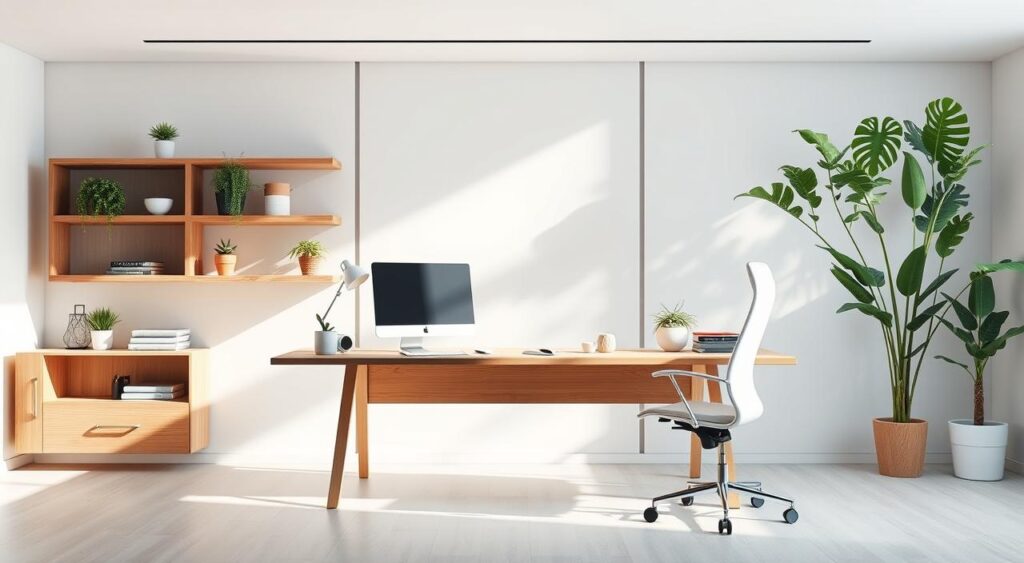
| Tip | Description |
|---|---|
| Neutral Palettes | Using whites, grays, and soft pastels to create an inviting atmosphere. |
| Vertical Storage | Maximizing space by utilizing walls for shelves and organizers. |
| Multifunctional Furniture | Designs that serve multiple purposes, like a desk that converts to a conference table. |
| Limited Decorations | Choosing only a few essential decor items to maintain clarity. |
| Ergonomic Choices | Furniture that promotes health and comfort during long working hours. |
By integrating these clean aesthetic tips and functional decor choices, you can establish a workspace that inspires productivity and facilitates focus. A minimalist office setup not only streamlines your work process but also nurtures your creativity, making your home office a place where you truly thrive.
Efficient Work from Home Solutions for All Needs
Setting up a productive home office demands a thoughtful approach to various needs. Effective solutions can boost efficiency, whether you’re balancing work or family duties. By integrating practical tips, your home office can become a space that supports both work and family time.
Flexible Workspace Arrangements
Customizing your home office to fit different work styles can greatly improve your efficiency. To achieve this, consider these efficient work from home solutions:
- Dedicated zones: Create specific areas for work and relaxation, ensuring each space meets its purpose.
- Adaptable furniture: Choose furniture that serves multiple functions and can be rearranged as needed.
- Organized resources: Store essential tools and supplies within easy reach to avoid workflow interruptions.
Creating a Family-Friendly Office
A family-friendly office balances work and personal life effectively. Here are strategies to create a supportive environment:
- Shared spaces: Design the office to allow family members to participate while you work, promoting interaction.
- Child-friendly elements: Add items that entertain younger family members, making them feel included while you work.
- Scheduling breaks: Plan regular breaks to spend time with family, improving both your work and family life.
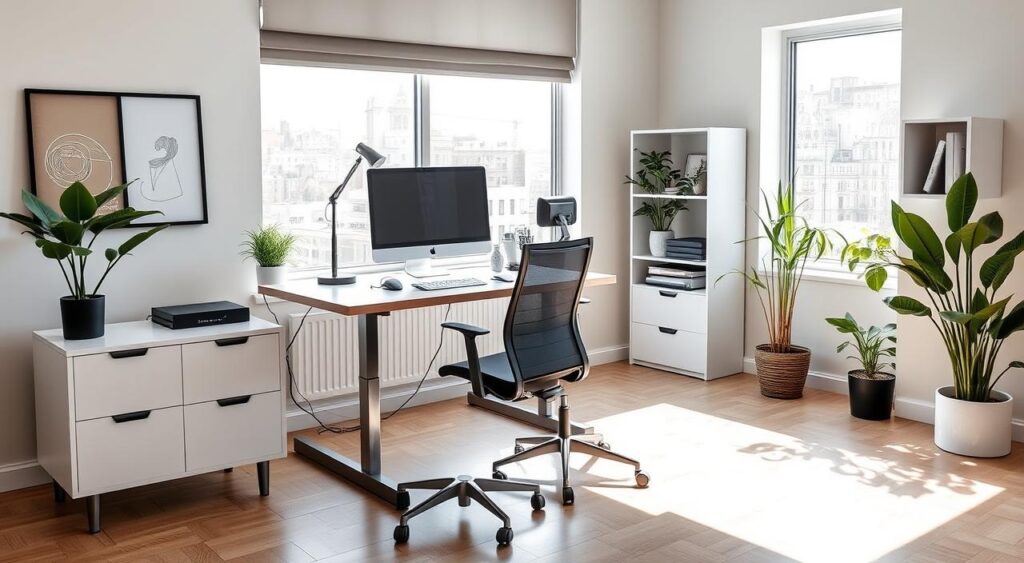
Comfortable Home Office Furniture: What to Consider
Setting up a comfortable home office demands careful furniture selection. It’s essential to match your preferences with the space available. The right furniture choices can boost productivity and satisfaction in your workspace. Consider factors like material quality and size to meet your needs effectively.
Choosing Suitable Materials
When picking materials for your office furniture, prioritize durability and comfort. The right materials enhance both looks and functionality. Look into options such as:
- Wood: Offers a classic look and lasting strength.
- Metal: Provides modern designs with superior durability.
- Fabric: Ensures comfort in seating options, reducing stress during long work hours.
Finding the Right Size for Your Space
Furniture sizing is key to optimizing your office layout. Choosing the right size prevents overcrowding and promotes organization. Assess your space and consider the following:
- Measure your area: Know your dimensions for an accurate fit.
- Choose multipurpose furniture: This can maximize benefits while minimizing spatial demands.
- Ensure ergonomic fit: Proper sizing can enhance comfort, specially for chairs and desks.
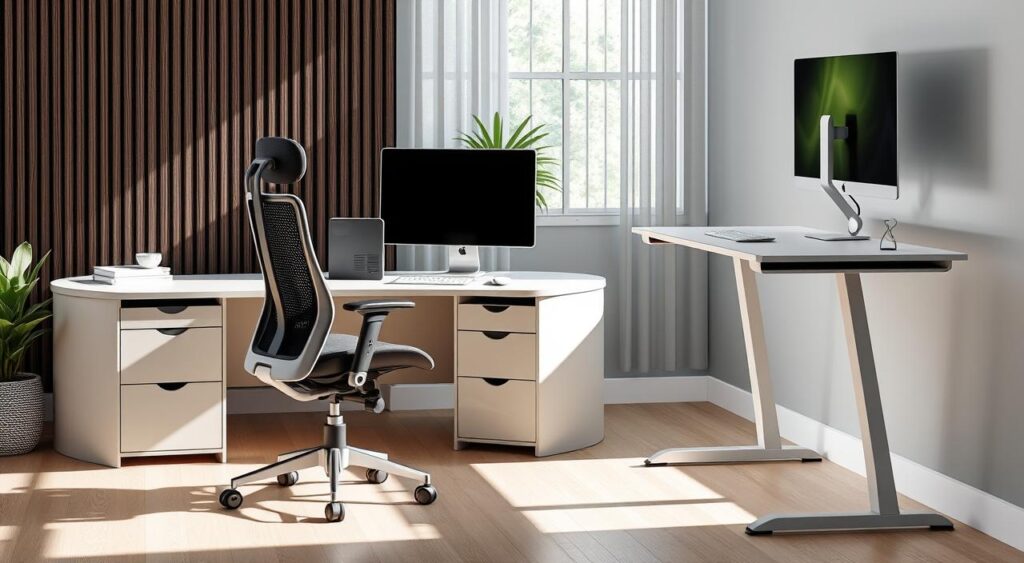
Stylish Home Office Accessories to Enhance Your Space
Your home office is a reflection of your style and functionality. By adding chic and practical elements, you can make it an inspiring place to work. Stylish accessories not only beautify your space but also help organize it. Choose essential items that boost your productivity and look for affordable options to save money.
Must-Have Office Accessories for Style and Function
To make your workspace welcoming, consider these stylish accessories:
- Desk organizers: Keep essentials within reach while maintaining a clean look.
- Chic file holders: Store important documents while adding a decorative touch to your workspace.
- Unique wall art: Choose pieces that inspire creativity and enhance your office’s vibe.
- Comfortable seating: Invest in stylish yet ergonomic chairs to promote good posture during long hours of work.
- Personalized stationery: Use custom notebooks or planners for both functionality and flair.
Budget-Friendly Admin Supplies
Stylish home office accessories don’t have to be expensive. Affordable supplies can also add charm and practicality. Here are some budget-friendly options:
- DIY decor: Create personalized pieces using materials from home improvement stores.
- Stylish pen holders: Use mason jars or repurposed containers for an eco-friendly approach.
- Printable artwork: Find affordable prints online to bring color and inspiration to your walls.
- Affordable desk mats: Look for trendy options to define your workspace without spending a fortune.
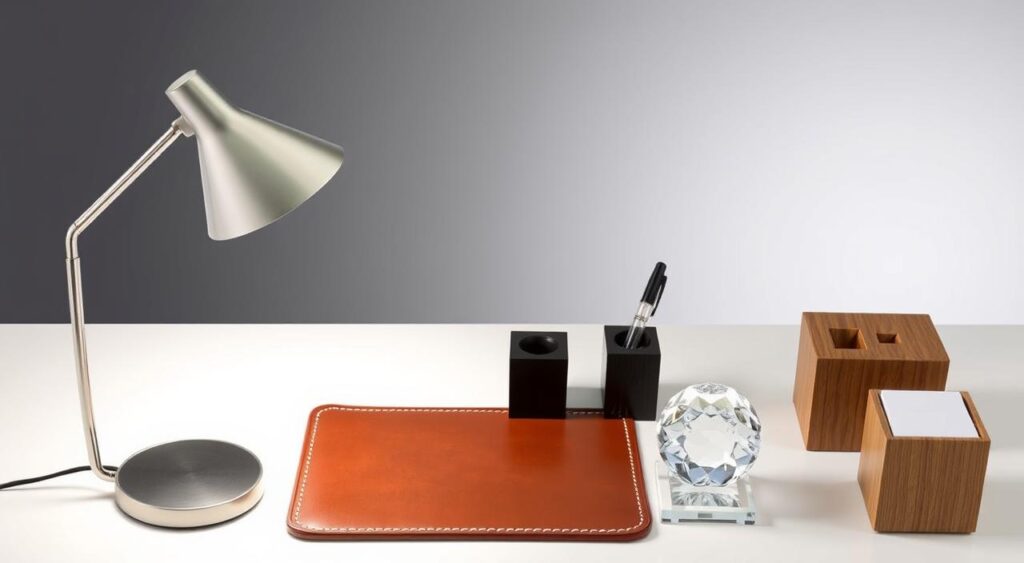
Organizing Your Time as Part of Your Office Setup
Effective time management is key to boosting productivity in your home office. Organizing your schedule and using various productivity techniques can streamline tasks and enhance focus. The right tools are essential for tracking progress and prioritizing tasks, leading to more efficient work patterns.
Time Management Tools and Techniques
Several tools exist to facilitate better time management. Here are popular options to consider:
- Task Lists: Simple yet effective, task lists help keep you focused on daily goals.
- Project Management Software: Tools like Trello or Asana provide a visual layout of tasks and deadlines.
- Calendars: Utilize digital calendars for scheduling meetings and deadlines.
- Time Tracking Apps: Applications such as Toggl allow you to monitor how much time you spend on different tasks.
Creating a Daily Work Schedule
Establishing a daily work schedule is vital for optimizing your productivity. Consider these tips for creating an effective schedule:
- Set Specific Hours: Determine your starting and ending times to create consistency.
- Block Time for Tasks: Allocate specific blocks of time for concentrated work on different projects.
- Include Breaks: Schedule regular breaks to recharge and maintain focus throughout the day.
- Reflect and Adjust: At the end of each week, review your schedule and adjust based on what worked and what didn’t.
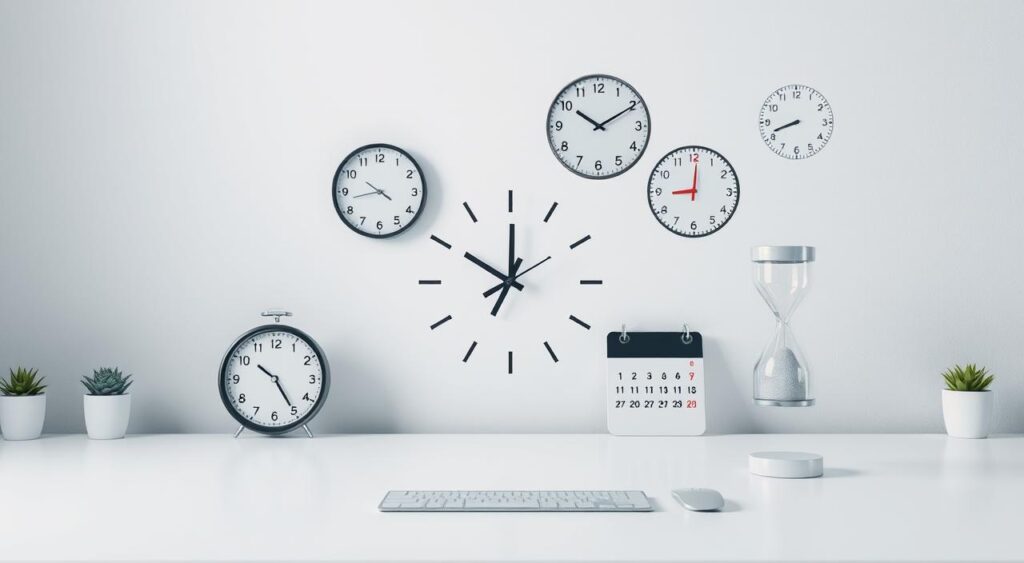
Implementing Organizational Systems for Longevity
Creating effective organizational systems is key to a well-run home office. A structured approach to supply inventory can make your workspace more efficient and boost productivity. Strategies that improve digital tool efficiency can turn disorganized spaces into tidy, productive areas.
Creating an Inventory System for Supplies
An inventory system for managing supplies can reduce the stress of last-minute shopping trips. Start by sorting items like paper, pens, and other essentials. Use bins or drawers with clear labels for quick access. Regularly checking your inventory helps avoid overstocking and ensures you have what you need.
Using Digital Tools for Efficiency
Technology can greatly enhance your organizational systems. Digital tools like Trello, Notion, or Google Sheets can help track your inventory online. Setting up automatic reminders for restocking can prevent running out of essential items.
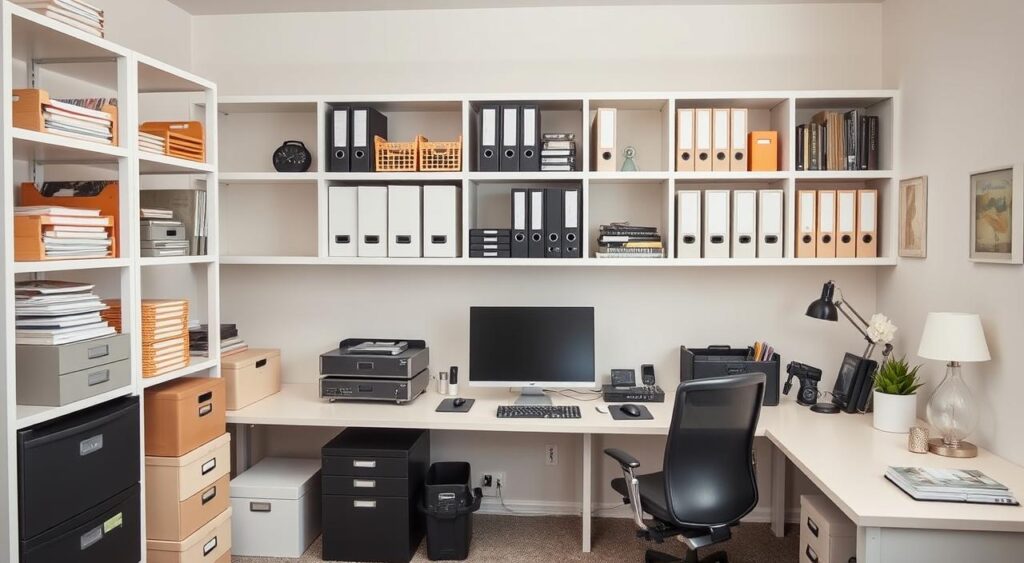
| Inventory Item | Quantity | Reorder Level | Digital Tool |
|---|---|---|---|
| Pens | 20 | 5 | Trello |
| Notebooks | 15 | 3 | Google Sheets |
| Sticky Notes | 50 | 10 | Notion |
| Printer Paper | 10 reams | 2 reams | Google Sheets |
By incorporating these strategies into your daily routine, your office will stay organized. Focusing on both physical and digital organization will streamline your workflow and create a productive environment.
The Role of Lighting in a Productive Home Office Design
Lighting in home offices greatly impacts productivity and well-being. A well-lit area boosts focus, cuts down eye strain, and makes the space inviting. By balancing natural and artificial light, your workspace can significantly improve.
Optimal Natural Light Usage
Maximizing natural light offers many benefits. It uplifts your mood and lessens the need for artificial light during the day. Place your desk near windows for the best daylight exposure. Sheer curtains filter light while reducing glare on screens. Here are ways to boost natural light:
- Opt for light-colored walls and furniture to reflect more light.
- Ensure windows are clean and free from furniture or decor.
- Use mirrors to distribute light evenly in the room.
Types of Artificial Lighting for Productivity
When natural light is lacking, artificial lighting can be a game-changer. The right mix ensures a balance of brightness and ambiance. Here are some artificial lighting options:
| Lighting Type | Description | Best Use |
|---|---|---|
| Task Lighting | Directed light for specific activities like reading or writing. | Desk lamps or adjustable LED fixtures. |
| Ambient Lighting | General illumination to fill the room. | Ceiling fixtures or wall sconces. |
| Accent Lighting | Highlights features or adds visual interest. | Track lighting or decorative lamps. |
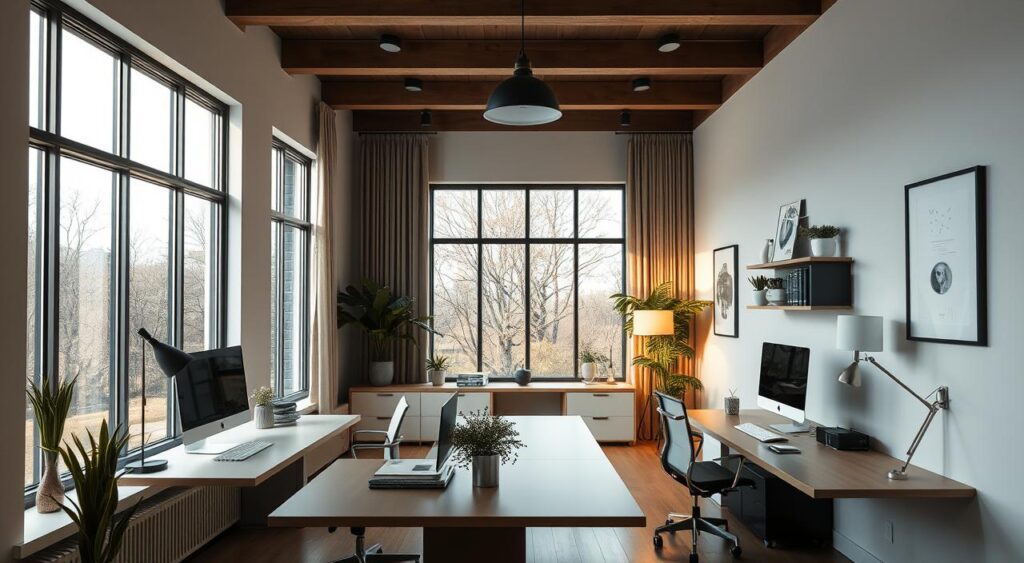
Effective lighting solutions enhance your workspace for productivity and comfort. Regularly assess your lighting, adjusting as needed for seasonal changes or task-specific needs. A well-lit home office, with the right mix of natural and artificial light, significantly improves your work experience.
Maintaining a Balance Between Work and Home Life
Achieving a meaningful work-life balance is key to your overall well-being. It’s vital to integrate strategies for separating work and leisure in your home office. This ensures mental clarity and boosts productivity. By setting up distinct spaces for work and relaxation, you can unwind after a long day.
Tips for Separation of Work and Leisure Spaces
To foster a healthy separation between work and leisure, consider these strategies:
- Create Defined Zones: Designate specific areas in your home for work and leisure. This distinction helps to mentally separate the two activities.
- Maintain a Clean Workspace: Keep your work area organized and free from distractions related to leisure activities.
- Use Room Dividers: If space allows, utilize dividers, bookshelves, or furniture arrangements to physically separate work and relaxation areas.
Establishing Work Hours and Break Times
Reasonable work hours and break times are essential for productivity and preventing burnout. Follow these work hours tips for a successful schedule:
- Set Clear Start and End Times: Begin and end your workday at consistent times to build a routine.
- Incorporate Regular Breaks: Schedule short breaks during your work hours to recharge and maintain focus.
- Respect Your Down Time: Once your workday is over, resist the urge to check emails or take work calls to fully embrace your personal time.
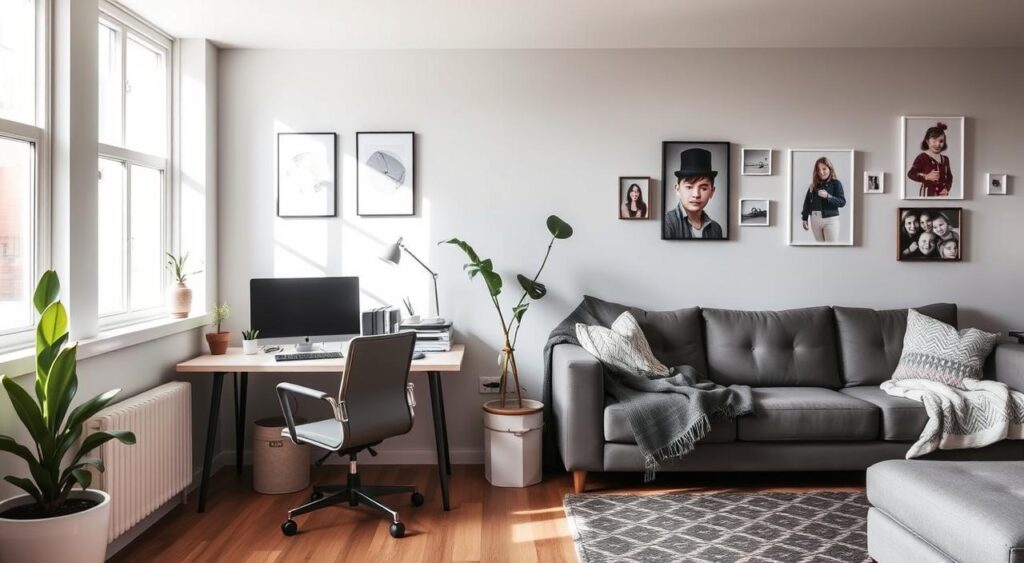
Conclusion
This article concludes with a summary of tips for improving your home office. Creating a productive workspace is more than just setting up a desk and chair. It’s about making your work environment better. By focusing on organization, ergonomics, technology, and aesthetics, you can turn your home office into a space that boosts efficiency and shows off your style.
Take a moment to evaluate your current workspace and think about the ideas we’ve discussed. Small changes, like flexible furniture, a clutter-free area, or better lighting, can make a big difference. Every detail matters in achieving your best performance every day.
Effective home office setup is about knowing what you need and want. Use the tips we’ve shared to enhance your work area, making it a place of creativity and productivity. You have the chance to create a space that supports your success in your professional life.
